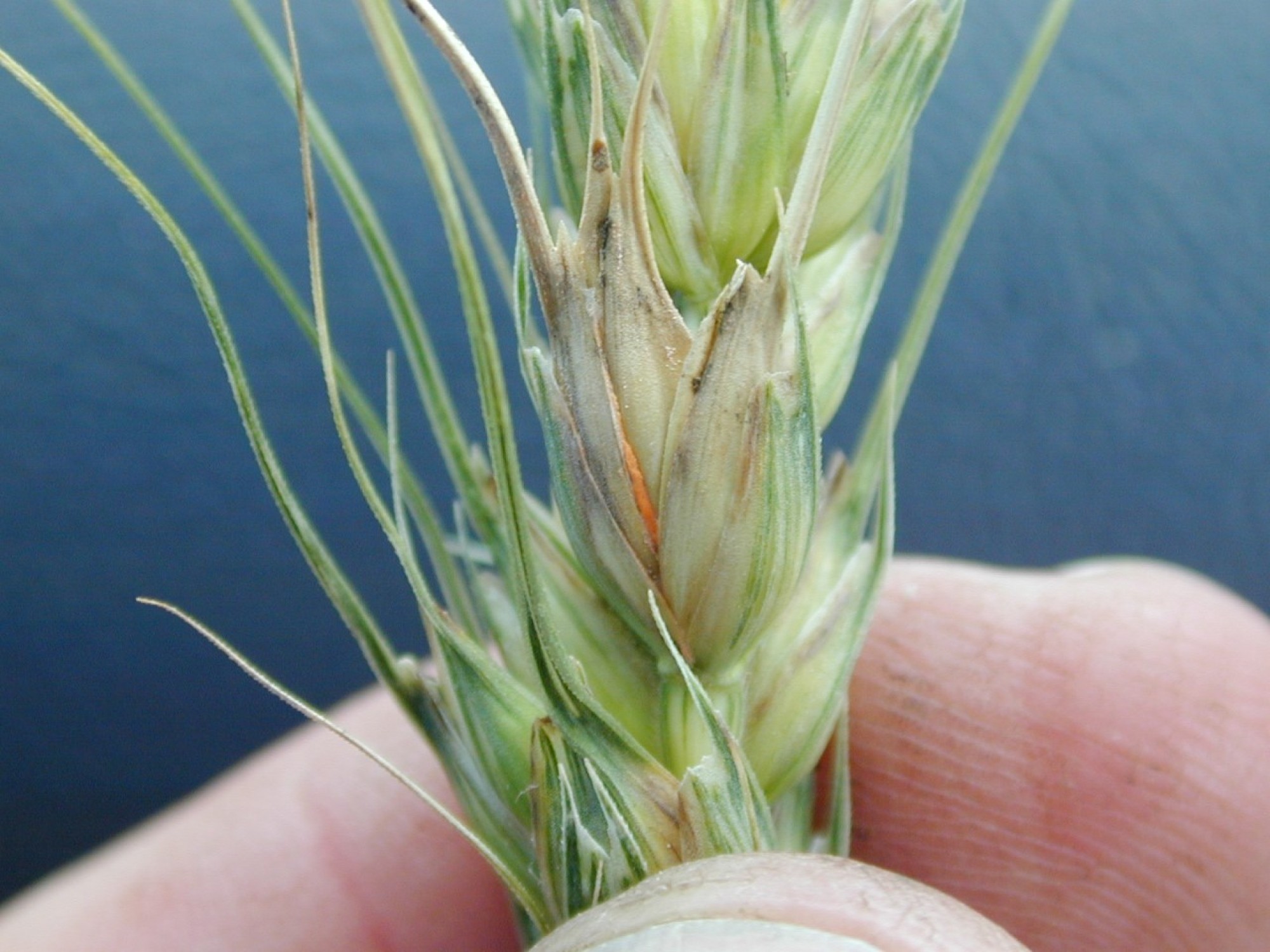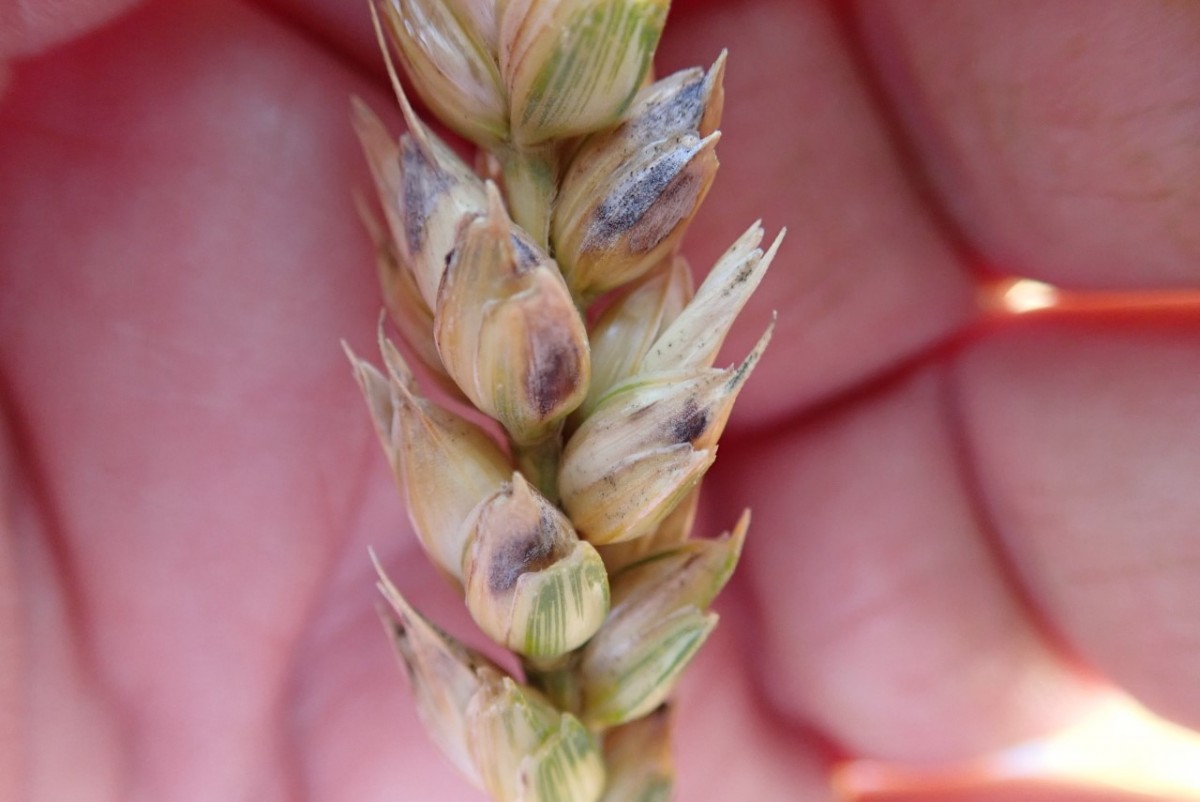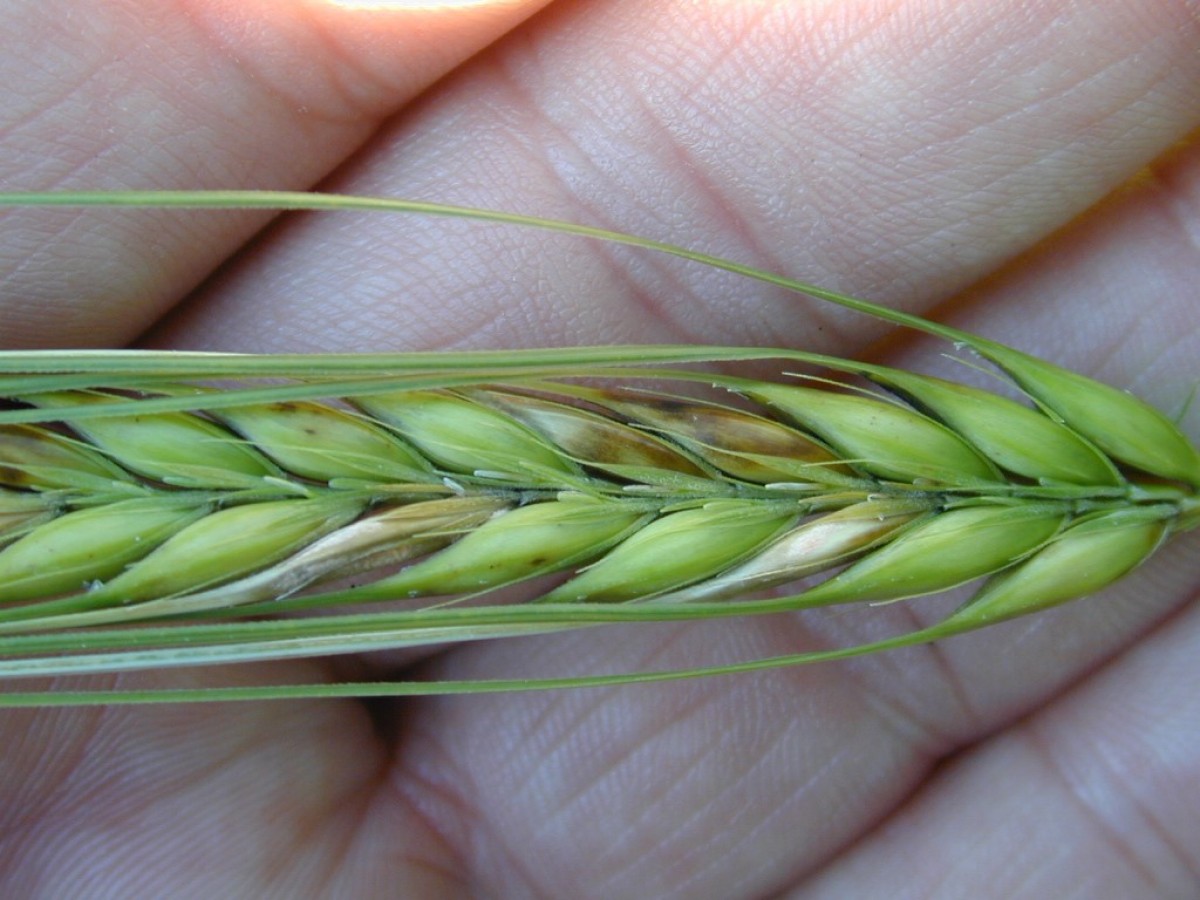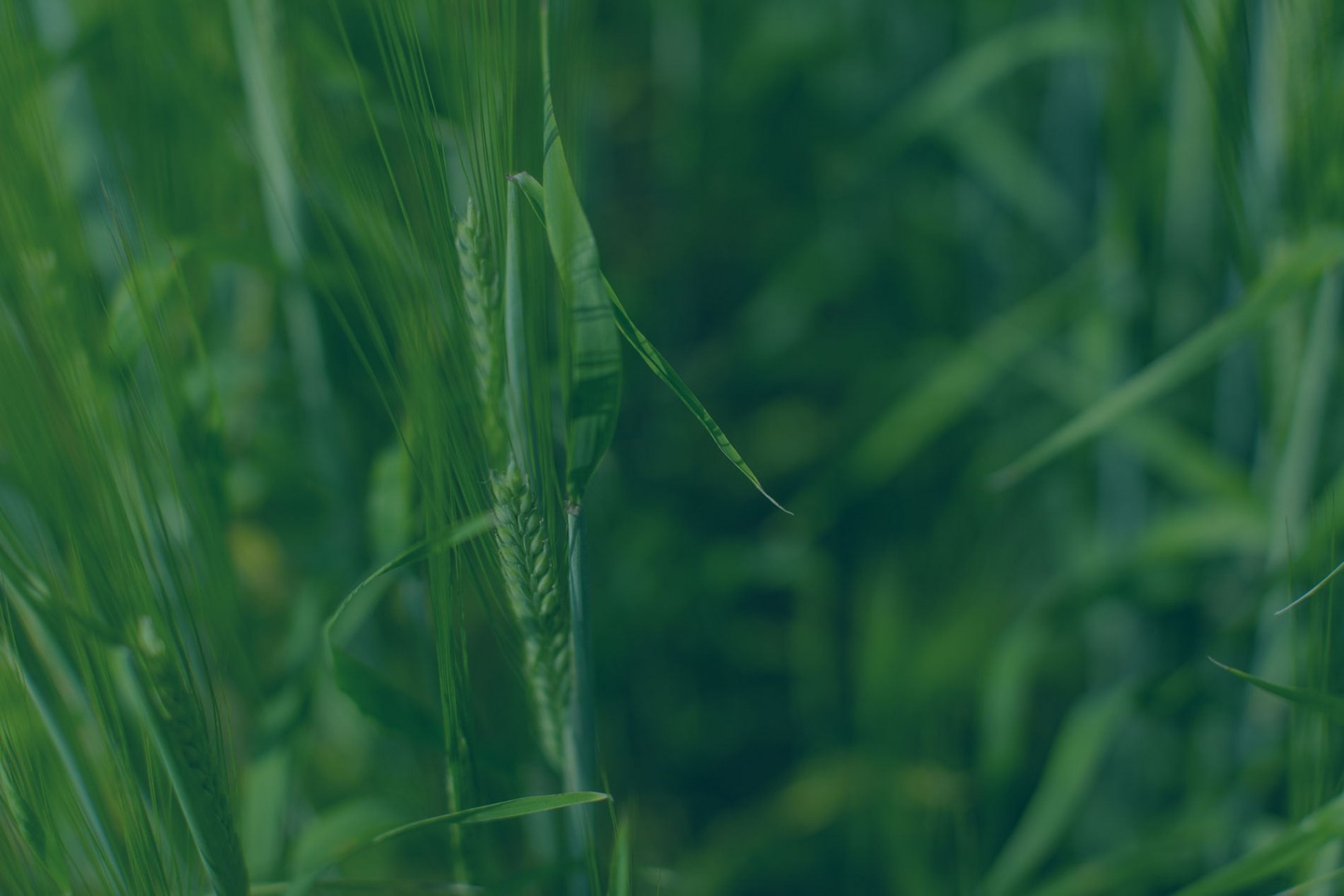Scouting for Fusarium head blight infection after a head timing fungicide application
By Jeremy Boychyn (M.Sc)(P.Ag), Agronomy Research Extension Specialist
After head timing fungicide application, Fusarium head blight (FHB) scouting is not over. The next step is to scout the crop for FHB infection symptoms 10-14 days after anthesis. Scouting post-anthesis can give an indication of FHB infection. Being aware of FHB infection from post-anthesis scouting allows for better future management decisions for the grain as well as future crops.
When scouting for FHB in wheat, enter the field 10-14 days after anthesis. FHB infection will occasionally present itself as premature bleaching of infected spikelets (Figure 1) as well as pinkish-orange, spore-bearing structures at the base of the glumes (Figure 2). Premature bleaching can occur in all spikes on the head, or just some, depending on how and when the infection occurred. If post-anthesis weather conditions are damp, you may witness pinkish, fluffy fungal growth. Additionally, in wheat, the rachis (the part of the stem that the kernels are attached to) and the top part of the stem may display a honey brown discolouration.

Figure 1: A fusarium-infected wheat head displaying orange, spore-bearing structures at the crevices and at the base of the glumes (Image: Dr. Kelly Turkington AAFC Lacombe)
Symptoms of FHB in wheat are distinct from other plant diseases including stagnospora glume blotch (SGB). Rather than producing bleached heads or portions of heads with orangish-pinkish sporulation, SGB results in brownish to brownish-purple lesions that are dotted with small bumps (pycnidia) which are fruiting structures that release rain-splashed pycnidiospores Figure 2).

Figure 2: Stagnospora glume blotch (SGB) in a wheat head (Image: Dr. Kelly Turkington AAFC Lacombe)
Wheat kernels impacted by SGB can be mistaken for Fusarium damaged kernels (FDK) during grading. For this reason, if downgrading occurs due to FDK with zero to limited history of FHB in your fields or region, it would be valuable to test your grain at an accredited lab to ensure that FHB pathogens are indeed present. For more information on identifying and managing SGB, click here.
When stripe rust infection is substantial it can cause premature ripening of portions of the wheat head resembling FHB (Figure 3). With stripe rust, however, you can often see the appearance of the uredospores on, or within infected florets. The uredospores tend to have a bright orangish-yellow granular appearance. For more information on stripe rust identification and management click here.

Figure 3: Stripe rust found in wheat head glume (Image: Dr. Kelly Turkington AAFC Lacombe)
For barley, identification of FHB infection is more challenging. FHB symptoms on barley are less obvious (Figure 4) and can be easily confused with head infections caused by spot blotch or net blotch pathogens. If conditions are moist you may see the appearance of whitish-pink hyphae and pinkish-orange sporulation, but the infected tissue itself will typically be brownish in colour. It’s advisable to submit suspect plant material to a lab for testing if FHB is suspected.

Figure 4: Fusarium infected barley head (Image: Dr. Kelly Turkington AAFC Lacombe)
If scouting and lab testing confirm FHB infection, steps can be taken prior to and during harvest to mitigate the impact. The following list is not exhaustive. For full details on harvest and post-harvest management of FHB, please visit ‘Let's Manage It!’ at managefhb.ca.
Assess other fields to determine if they carry the same level of infection. Fields that flowered at different times may not have the same infection level.
When possible, store confirmed or suspected FHB infected grain separately from non-infected grain. By storing infected and non-infected grain separately, you are better able to market and manage each crop.
Adjust combine settings during harvest to collect FDK for post-harvest cleaning later in a gravity or colour sorter.
In planning for the next season, grain suspected or confirmed to contain Fusarium graminearum (Fg) through testing can be treated with a seed treatment. Preferably, a different seed lot should be used. This is especially important for regions where FHB field inoculum is low. In these regions, avoid seeding Fg infected seed to help maintain low soil inoculum levels. If Fg free seed is not available, ensure the infected seed is treated with a seed treatment registered to control Fusarium. Using infected grain should be a last resort.
All of these tactics can help mitigate the effects of FHB on your farm. Scouting post-anthesis will help you be better prepared to enlist them.

